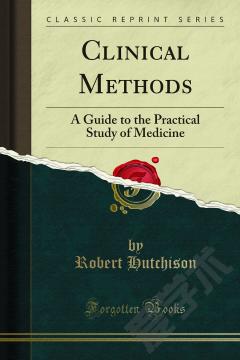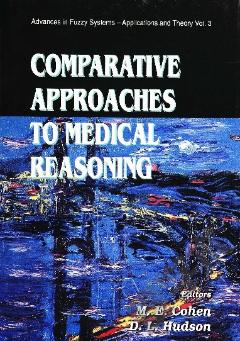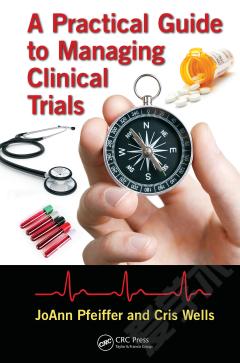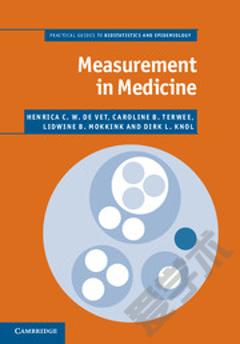Comparing Clinical Measurement Methods —— A Practical Guide
----- 比较临床测量方法:实用指南
Acknowledgments. 1 Introduction. 2 Method comparisons. 2.1 One measurement by each method. 2.1.1 Prediction of one method from another. 2.1.2 Why not use the correlation? 2.1.3 A new method and a reference method. 2.2 Replicate measurements by each method. 2.2.1 Exchangeable replicates: fat data. 2.2.2 Linked replicates: oximetry data. 2.2.3 Why not use the averages of the replicates? 2.3 More than two methods. 2.4 Terminology and notation. 2.5 What it is all about. 3 How to 3.1 use this chapter. 3.2 Two methods. 3.2.1 Single measurements. 3.2.2 Comparing with a gold standard. 3.2.3 Replicate measurements. 3.3 More than two methods. 3.3.1 Single measurements. 3.3.2 Replicate measurements. 4 Two methods with a single measurement on each. 4.1 Model for limits of agreement. 4.1.1 Prediction between methods. 4.1.2 The correlation of the difference and the average. 4.2 Non-constant difference between methods. 4.3 A worked example. 4.4 What really goes on. 4.4.1 Scaling. 4.4.2 Independence. 4.4.3 Actual behavior. 4.5 Other regression methods for non-constant bias. 4.5.1 Why ordinary regression fails. 4.5.2 Deming regression. 4.6 Comparison with a gold standard. 4.7 Non-constant variance. 4.7.1 Regression approach. 4.7.2 A worked example. 4.8 Transformations. 4.8.1 Log transformation. 4.9 Summary. 5 Replicate measurements. 5.1 Pairing of replicate measurements. 5.1.1 Exchangeable replicates. 5.1.2 Linked replicates. 5.2 Plotting replicate measurements. 5.3 Models for replicate measurements. 5.3.1 Exchangeable replicates. 5.3.2 Linked replicates. 5.4 Interpretation of the random effects. 5.5 Estimation. 5.6 Getting it wrong and getting it almost right. 5.6.1 Averaging over replicates. 5.6.2 Replicates as items. 5.7 Summary. 6 Several methods of measurement. 6.1 Model. 6.2 Replicate measurements. 6.3 Single measurement by each method. 7 A general model for method comparisons. 7.1 Scaling. 7.2 Interpretation of the random effects. 7.3 Parametrization of the mean. 7.4 Prediction limits. 7.4.1 Mean of replicates. 7.4.2 Plotting predictions between methods. 7.4.3 Reporting variance components. 7.4.4 Comparison with a gold standard. 7.5 Estimation. 7.5.1 Alternating regressions. 7.5.2 Estimation using BUGS. 7.5.3 A worked example. 7.6 Models with non-constant variance. 7.6.1 Linear dependence of residual standard error. 7.7 Summary. 8 Transformation of measurements. 8.1 Log transformation. 8.2 Transformations of percentages. 8.2.1 A worked example. 8.2.2 Implementation in MethComp. 8.3 Other transformations. 8.4 Several methods. 8.5 Variance components. 8.6 Summary. 9 Repeatability, reproducibility and coefficient ofvariation. 9.1 Repeatability. 9.2 Reproducibility. 9.3 Coefficient of variation. 9.3.1 Symmetric interval on the log scale. 9.3.2 Computing the CV correctly. 9.3.3 Transformations. 10 Measures of association and agreement. 10.1 Individual bioequivalence criterion. 10.2 Agreement index. 10.3 Relative variance index. 10.4 Total deviation index. 10.5 Correlation measures. 10.5.1 Correlation coefficient. 10.5.2 Intraclass correlation coefficient. 10.5.3 Concordance correlation coefficient. 10.6 Summary. 11 Design of method comparison studies. 11.1 Sample size. 11.1.1 Mean parameters. 11.1.2 Variance parameters. 11.2 Repeated measures designs. 11.3 Summary. 12 Examples using standard software. 12.1 SAS. 12.1.1 Exchangeable replicates. 12.1.2 Linked replicates. 12.2 Stata. 12.2.1 Exchangeable replicates. 12.2.2 Linked replicates. 12.3 R. 12.3.1 Exchangeable replicates. 12.3.2 Linked replicates. 13 The MethComp package for R. 13.1 Data structures. 13.2 Function overview. 13.2.1 Graphical functions. 13.2.2 Data manipulating functions. 13.2.3 Analysis functions. 13.2.4 Reporting functions. References. Index.
{{comment.content}}








 京公网安备 11010802027623号
京公网安备 11010802027623号